What are dermal fillers?
Dermal fillers (also known as ‘injectable face fillers’) are injectable gels made of high-density molecules which add volume or structure to the site where they are injected. They are one of the riskiest tweakments to get if you don’t go to a trusted practitioner due to the complete lack of regulation around the products in the UK. However, when used properly and safely, they can work wonders in reshaping and revolumising areas of the face, and increasingly the body too.
What are dermal fillers made of?
There are three main categories of fillers:
1) Temporary fillers made from hyaluronic acid gel. Most of the dermal fillers that you will find in the UK fall into this category.
- Most temporary fillers on offer in UK clinics are made from different types of hyaluronic acid gel. The best-known, best accredited, and most commonly used brands of filler are Juvederm and Restylane and they both fall in this category, as do other well-known but less widely used products such as Teosyal, Hylaform, and Belotero.
- Saying that Juvederm and Restylane are ‘best-known’ may be correct, but it is probably overstating the case, as most people who have had fillers injected don’t seem to have asked — or been told, or remembered — what brand of filler was used. I’ll get onto why it matters in a minute.
- If you have heard of hyaluronic acid (HA) as a moisturising ingredient and are wondering whether fillers are made from the same stuff, the answer is yes, up to a point.
- But the hyaluronic acid in the form that it’s used in moisturising serums would quickly be absorbed into the body and vanish. So in most hyaluronic acid filler gels, the molecules of hyaluronic acid are first stabilised and then ‘crosslinked’ into a kind of lattice to make them hang around for longer in the skin. The crosslinked gel holds onto moisture as well as hyaluronic acid does in a serum, and that moisture helps give the filler its structure and plumps up the skin from beneath.
- Interestingly, there have been studies that show how using fillers benefits the skin above the treated area. This is because the presence of the hyaluronic acid filler improves the levels of collagen and elastin in the surface skin. This is the same effect as you get with the beneath-the-skin moisturising injectables such as Volite, Skinboosters, and Profhilo, which are now being described more as ‘skin tissue stimulators’ rather than just dilute fillers, because of the way they can help the skin regenerate itself, grow more collagen and elastin, and hydrate itself better. Many of these hyaluronic acid fillers come with a built-in anaesthetic in the form of lidocaine, to make the injection process more comfortable.
2) Temporary but longer-lasting ‘stimulating’ fillers made from substances like polycaprolactone, a bio-resorbable medical polymer, or poly-l-lactic acid, a synthetic material that has been used for years in medicine in absorbable stitches.
These stimulating fillers, such as Sculptra, Ellansé, and Radiesse, are also temporary but they are longer lasting than hyaluronic acid fillers, and work in two ways. Like the hyaluronic acid fillers, these ‘stimulating’ fillers come in the form of injectable gels that plump out the area where they are placed, but also, each contains a second substance that stimulates the skin to create more of its own supportive collagen, which develops over the course of the next six months and lasts for two years. It is this type of dermal filler that is increasingly being used to treat body concerns, especially in terms of body sculpting.
What are these extra, second substances?
- In Sculptra, it is tiny particles of poly-L-lactic acid, a synthetic substance that has been safely used in medicine, in dissolvable sutures/stitches, since the 1980s. The poly-L-lactic acid takes around six months to be absorbed by the skin, by which time it has built new collagen that will last for two years.
- In Ellansé, it’s minute round particles of polycaprolactone (a bioabsorbable material that is also used in sutures for stitches) that slowly get absorbed by the body but in the meantime are busy stimulating collagen growth.
- In Radiesse, it’s particles of calcium hydroxylapatite (a bone-like substance that also eventually gets absorbed) which form a kind of miniature scaffold within the skin, around which a network of new collagen forms.
- Pros and Cons of ‘Stimulating’ Fillers
- The advantage of stimulating fillers is that they last longer than hyaluronic acid fillers, so they are a more economical option in the long term. The disadvantage is that, if you don’t like the results, all you can do is wait until the filler is all absorbed by the body.
3) Permanent fillers, such as silicone (which I would never recommend).
- If someone tries to offer you permanent fillers, please, just say no. Why? Because you really don’t want anything injected into your face that is going to stay there for good.
- Permanent fillers might sound like a great idea — no need to go back every year for a top up! So much cheaper! — but the potential problems are huge. Liquid silicone is popular in the USA for, say, filling out old acne scars, but with anything that is injected into your face, there is always a risk that the body will at some point in future decide that it doesn’t like this foreign material and ‘encapsulate’ it, growing collagen around it in a hard lump to shut it off from the rest of your skin tissue. If that happens, the only way to remove the growth, and the original filler, it to have it surgically removed.
- Encapsulation isn’t the only problem. As your face changes over the years, and some parts of it sag and descend, the blob of permanent filler may no longer be exactly where you want it to be. So just don’t try permanent fillers. Particularly not in your lips.
What are hybrid dermal fillers?
Hybrid fillers are a relatively new, and fast-growing category of temporary dermal fillers, which see different types of filler ingredients added together to supercharge results. Broadly speaking, it can help to improve filler dispersion, provide synergistic effects and reduce costs.
A good example, as recommended by Dr. Sophie Shotter, is HArmonyCa, which volumises gently as well as stimulating new collagen formulation, due to the combination of hyaluronic acid with a biostimulator. She has seen great results for treating the mid-face and cheek area, due to its a more natural-looking plumping effect, especially when your face is in motion. You can probably expect even more hybrid fillers to be developed in the coming years.
Do dermal fillers work?
Yes, dermal fillers work well: to revolumise areas of the face where there has been volume loss due to the normal processes of ageing; to add structure to the face, for example in the chin or jawline, or to add definition to the cheekbones; and to plump, reshape, and smooth your hands, knees and body contours.
- Perhaps I should qualify that previous statement. In the right hands, fillers work extremely well, but if they are injected by a practitioner without medical experience, proper aesthetic training and the ability to handle potential complications, they can be a disaster waiting to happen.
- If they are injected inexpertly, they can easily look bizarre. We have all seen pictures of well-known faces with chipmunk cheeks or over-inflated lips, and the same is true for areas of the body.
- But worse than looking bizarre, they can be dangerous. See the section below on the potential side-effects of dermal fillers.
What do dermal fillers do?
Dermal fillers are used in a number of ways, from filling deep lines in the skin and revolumising the face, to reshaping key body areas, such as the hands and bottom. They are usually made hyaluronic acid which holds many times its own weight in water, and this hyaluronic acid is ‘crosslinked’ to keep it stable within the skin, thus providing soft volume under the skin which plumps up deflated cheeks or thin lips, or hollow temples, or sharpens the jawline. Fillers comes in different thicknesses depending on what they are to be used for – you need a firmer filler to provide structure in the face and, say, augment the jawline, while you want a fluid one for use around the eyes.
Where can I get dermal fillers?
In too many places, at the moment. The problem with dermal fillers is that they are so easy to come by. The lack of regulation means that pretty much anyone can inject you with pretty much anything, all under the guise of providing a professional dermal filler treatment. Be very sceptical – not all fillers and practitioners are equal.
The key is knowing what to look for to ensure you are given a high-quality product from an experienced and reputable practitioner. The quickest way to do that is to use my practitioner finder– I only list those you can trust – or you can download the dermal fillers factsheet, which tells you which brands of filler are safe and make sure you follow my advice for staying safe when choosing who goes on to inject the filler.
- Which brands of filler are considered safe? While all the best known and most widely used fillers have been put through lengthy and specific tests to assess their safety and how well they work, there are scores of others that haven’t. Many of these newcomers sound like fascinating, innovative products made from unusual ingredients like, say, seaweed, and some of them may well be the big new names of the future. But until they have been around for a few years and been shown to be safe and effective (and, have at least acquired a CE mark and, preferably, have also attained the gold standard of approval from the American Food and Drug Administration, the FDA — more on which in a minute), it is hard to know whether or not they may be problematic.
- In the USA, dermal fillers are classed as ‘cosmetic devices’ and are regulated by the Food and Drug Administration (FDA). Only the specific fillers that get through the lengthy FDA approval procedure can be used, and then only by medical doctors.
- In the UK, dermal fillers are regulated as ‘medical devices’ under European Regulations and must have a CE mark, which says that the product does what it claims to do. A CE mark is much easier to obtain than FDA approval but it does offer some reassurance that a product is fit for purpose
- After the PIP breast implant scandal of 2010, Professor Sir Bruce Keogh led a team that surveyed and reported on the whole area of aesthetic medicine as well as cosmetic surgery in the UK. One of the strong recommendations of the 2013 Keogh report was that dermal fillers should be reclassified as prescription-only medical devices, but this hasn’t happened. Another recommendation was that there should be a central register of all surgical and non-surgical practitioners; yes, it’s a scandal that there still isn’t one.
The safest fillers
You can start with the FDA and search on their website (fda.gov, look for medical devices, dermal fillers, approval).
On that list, you’ll see two major lines:
- Lots of hyaluronic acid-based products in the Juvederm range (from medical giant Allergan, which also makes most of the world’s breast implants and also makes toxins)
- Many products in the Restylane family (now owned by the dermatology specialists Galderma)
- You’ll also find a handful of others:
- Teoxane’s hyaluronic acid fillers, which joined the list in 2018
- Belotero Balance, a hyaluronic acid gel (owned by Merz Aesthetics)
- Radiesse (calcium hydroxylapatite; also owned by Merz Aesthetics)
- Sculptra (poly-L-lactic acid; owned by Galderma), popularly used for body tweakments.
- Elevess (hyaluronic acid-based filler that is rarely used in the UK)
- Artefill, which used to be called Artecoll in the UK, though since 2015 it has been renamed Bellafill (still with me?). It is also a very long-lasting filler, combining collagen with microbeads of polymethyl methacrylate. (Why fill your face with plastic microbeads? To stimulate the growth of new collagen. You don’t fancy that? No, me neither.)
But in terms of what’s FDA approved — that’s it. Ellansé, which I’ve mentioned above as it’s an interesting filler with a lot of safety studies behind it, and its sister-product, a hyaluronic-acid filler called Perfectha, don’t yet have FDA approval but they are working their way through the lengthy process towards accreditation. Does that mean you shouldn’t use them? No – they seem very good, and plenty of great practitioners rate them highly.
And as for all the rest…
And yet, what about all the other fillers that can be found in the market in the UK? There are many. The Keogh report estimated that there were between 140 and 190, and that was years ago.
In the UK, the Medicines and Healthcare products Regulatory Agency (MHRA) classifies dermal fillers as ‘medical devices’ rather than as prescription medicines. If you ask what safety data there is to support them, you’ll be told they have a CE mark, which companies can self-certify for, or use independent laboratories to gain.
What a CE mark means and can you trust it?
Can you put much trust in a CE mark? I spoke to Rajiv Grover, a leading cosmetic surgeon and former president of the British Association of Aesthetic Plastic Surgeons (BAAPS) about this. He says: ‘Dermal fillers are classified as medical devices which only require a CE mark. A CE mark can be obtained by treating a handful of patients with a 6–12 month follow-up. Often the real issues with medical devices take longer than this to emerge.’
Often, companies will suggest, as I mentioned earlier, that the more novel types of injectable filler will be the big new names in the business within a decade. That’s always possible, but in the meantime, it is the UK consumers who are being used as guinea pigs by the companies who want to try out new products but are prevented by law from using them in other countries.
What the Keogh report called for back in 2013, and what all reputable cosmetic practitioners have been asking for, is to have dermal fillers classified as prescription medicines rather than simply as ‘medical devices’. That would mean fillers could only be obtained, and given to patients, by registered medical professionals (doctors, surgeons, dentists, and nurse-prescribers).
How much do dermal fillers cost?
The price you can expect to pay for fillers will vary hugely depending on the product used, how much is injected, the area being treated (the body tends to require more product for example), and the expertise and location of the practitioner. This is why I’ve given such a large cost ballpark above – to indicate the price of a small tweak in one area all the way up to full-face or body rejuvenation work. As with all tweakments, you get what you pay for, so if you find a price that sounds too good to be true – run! I’ve already talked about the problems in the industry, but do read on for an analysis of what can go wrong.
How long do dermal fillers take?
Unless you already know exactly what you want done and how, your first consultation should be a thorough needs assessment of your facial or body structure. This can take a good 20 minutes. Once you’re actually on the couch for treatment, though, the work itself will only take 15-30 minutes. If you’re not great with needles and want some numbing cream then factor in a further 20 minutes for the anaesthetic to take effect. So, there are a few variables, but you probably won’t be in there longer than 70 minutes.
What are the potential side effects of dermal fillers?
It’s a long list and I’m going to go through it all so that people can see how dangerous the lack of regulation is. I’ve put all these points in order of how likely they are to happen and how serious they are along with what you should do if you experience these issues.
- Bruising. Any injection carries a risk of bruising, which will be temporary but which may take a fortnight to fade. Bruising is very common. Some people just do bruise more than others.
Taking exercise, which speeds up the blood circulation, or drinking alcohol, which temporarily thins the blood, soon after the procedure may make any bruising worse.
What to do: Bruises are easy enough to cover with concealer — I prefer the sort of product that is strong enough to cover tattoos.
- Swelling and skin redness. It is very likely that there will be swelling around the injection site, and that the skin will be red, simply from the fact that a needle was sunk into your skin. The swelling will go down, which may take a few hours, or a few days.
There may also be swelling of the area that has been injected, though it can be hard to tell how much of this is due to the volume of the product that has been put in and how much is due to your face or body protesting at being injected. Again, this may take a few days to settle.
What to do: Swelling can be reduced by holding an ice-pack wrapped in a clean cloth to the area every few hours. A latex glove, filled with water, tied, and frozen, makes a quick ice-pack.
- Rashes, swelling, or itching caused by an allergy to the particular substance used — this is rare, given that most fillers are made of substances like hyaluronic acid with minimal potential for causing reactions, but not unheard of.
What to do: Swelling that seems more like an allergic reaction may respond to an antihistamine.
- Acne-like skin eruptions. These can result from bacteria getting into the holes left by needles on your face or body.
What to do: Wash the treated area with care, swab it with a salicylic acid toner, and don’t pick at the spots.
- Infection at the injection site— again, this can be caused by bacteria getting into the injection site and needs swift treatment.
What to do: Consult your practitioner and send them photographs; you may need antibiotics.
- Blistering of the skin. This is rare but has been reported, around the injection sites.
What to do: Consult your practitioner at once for advice.
- Asymmetric result. The only way you would end up asymmetric after a treatment is if your practitioner had a poor sense of proportion. But once the filler is in there, your choices are limited.
What to do: Either you can have the filler dissolved (with Hyalase) or you can have more filler injected in the appropriate place to balance things up. You might want the corrective work to be done by a different practitioner.
- Filler moving away from the intended treatment area over time. Filler ‘migrating’ away from the site where it is injected is not common, but it can happen.
What to do: The only solution is to have the misplaced filler dissolved with Hyalase, and start again.
- Filler forming lumps under the skin (1). Fillers, particularly hyaluronic acid fillers, don’t often provoke reactions in the skin and integrate quickly and smoothly with the skin’s tissues. There are two ways they form lumps under the skin. The first is simply if the filler has been misplaced, or badly positioned, and not smoothed into shape, which practitioners will usually do with a firm, gentle pressure and massage after injecting the fillers.
What to do: If these lumps are obvious and you can’t live with them, you’ll need to have them dissolved with Hyalase.
- Filling forming lumpy granulomas (2). The second type of lumps are more of a problem. However well tested fillers are, they are still a foreign substance that has been introduced to your body, and your body may, in its wisdom, at any point suddenly decide that it objects to having them there, and start to form a ‘granuloma’ around the filler. It’s not an allergic reaction, more of an inflammatory reaction, but the net result is that you end up with a lumpy growth with the filler encapsulated inside it.
What to do: The best way to treat these is with steroid injections, which interfere with the way the fibroblasts within the skin cells are enabling the growth. The other option is to cut the growth out, surgically, but a) it can be hard to get the entire growth that way, and b) it will leave a scar.
- Filler injected into a blood vessel. This is rare but extremely serious. It is rare because one of the first things all injectors are taught is, once they have put the needle through the skin, to ‘aspirate’, i.e. to pull the plunger back a fraction, just to check that they are not in a blood vessel (so if they aspirate and blood comes into the syringe, they know they need to stop, get out of that area, and reposition). Because if filler is injected into a blood vessel, it can block that vessel and kill the surrounding skin tissues (necrosis), or that blockage can travel back to the tiny blood vessels that supply the eye, which can lead to blindness. That is extremely rare, but it is not unknown. The first signs that something is wrong are usually pain and skin blanching or discolouration at the injection site and, if it happens, your practitioner needs to treat it as an emergency. There may also be swelling and this discolouration may look like a bruise, but it’s not a bruise, it’s a really serious complication – look up pictures online of dermal filler necrosis if you want to get an idea of what it might look like.
What to do: Contact your practitioner immediately if you think this is happening. You need treatment straight away to try to shift the blockage.
When you’ve seen this list, you can see why it is vital to choose a practitioner who not only knows how to use fillers, but what to do if any problems arise, and it is one reason why the aesthetics industry is so keen that non-surgical treatments are perceived as the medical procedures that they are. This is something you should ask about at your consultation before treatment and this is where medically trained practitioners clearly have the edge over others. Because if you have a problem and your practitioner is not helpful, or is dismissive of your problem, you will need to seek help elsewhere.
What is it like to have dermal fillers?
The dermal fillers I’ve had have been quick, easy and painless. Even without anaesthetic cream, the needles cause very little discomfort going in – although I would recommend the cream if you’re bad with needles or you’re receiving treatment in a sensitive area. If a cannula is being used, there’s a weird sensation as it works its way under your skin, but it’s more disconcerting than anything else. Depending on the viscosity of the filler used and the area treated, your practitioner may massage the product around a little to ensure it sits in the right place and looks the way it should.
You won’t feel the filler itself as it’s injected into you, nor do you feel it once it’s sitting under your skin, but oh boy do you see the changes quickly! Immediately after the treatment you can look in a mirror and get a pretty good idea of what’s been done. There may be some extra swelling, so bear that in mind when taking your first look, but that should subside in a matter of days.





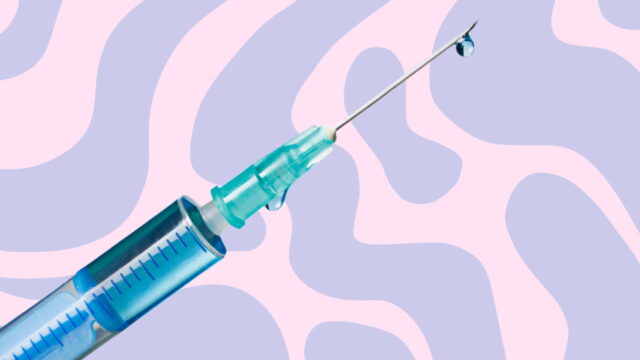
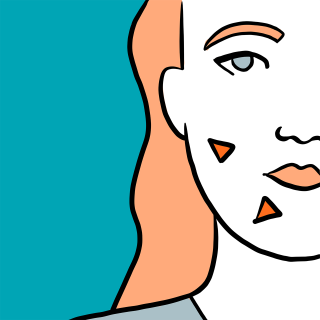
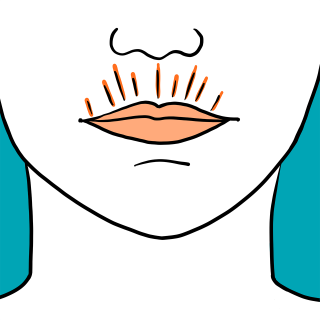
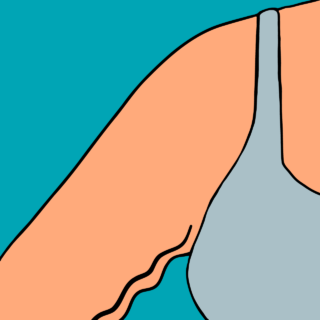
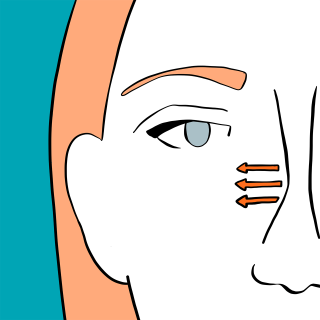


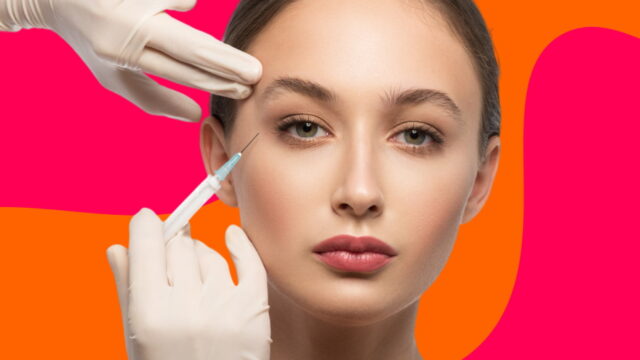


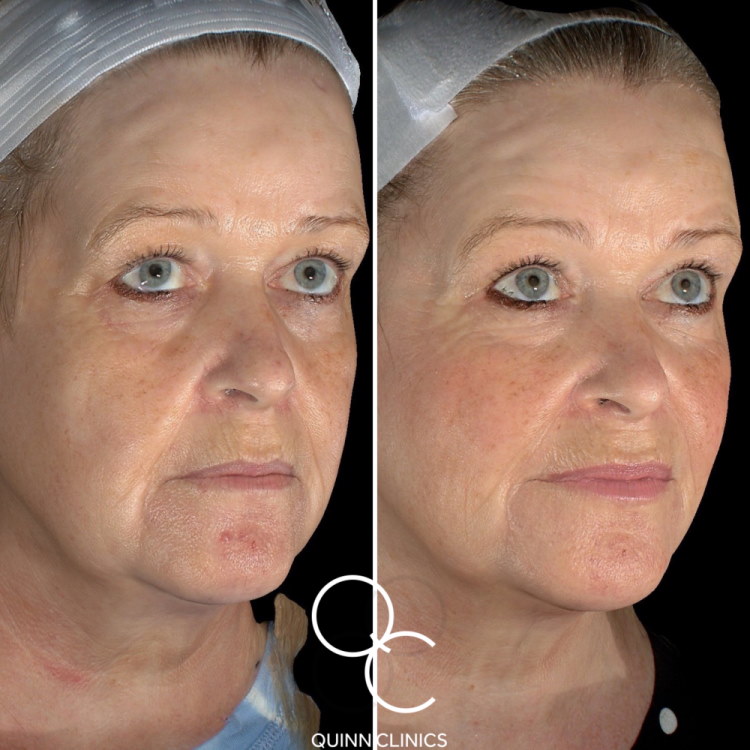
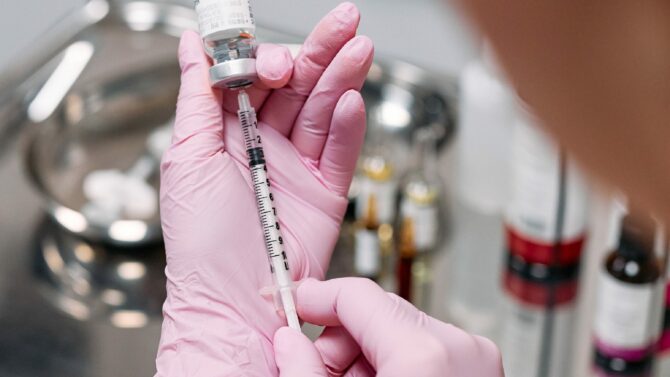
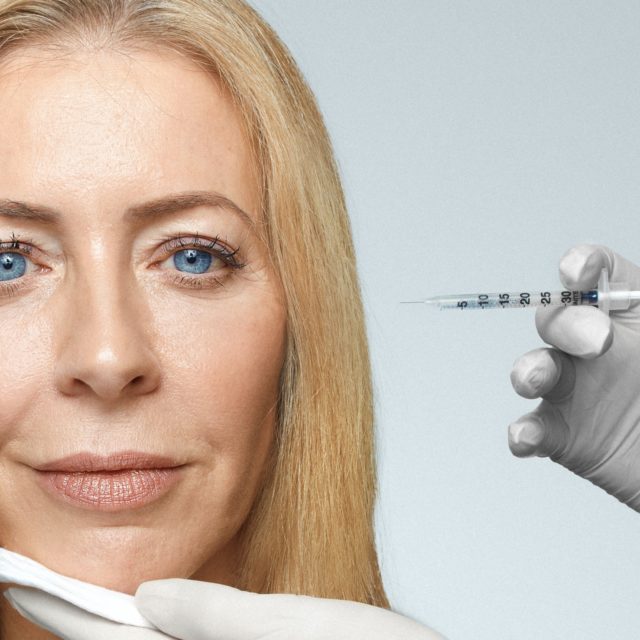

 The Tweakments Chatbot
The Tweakments Chatbot